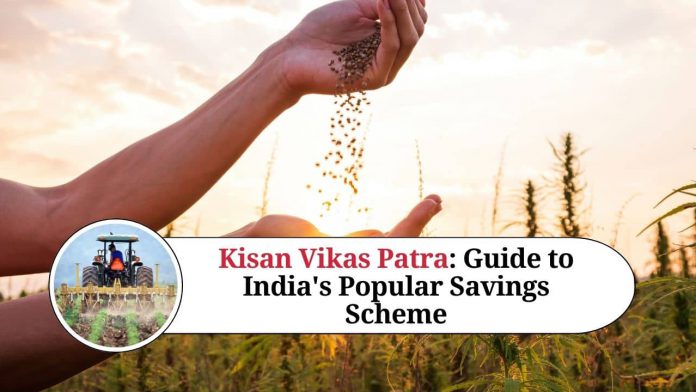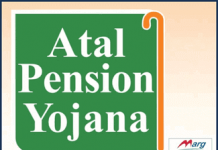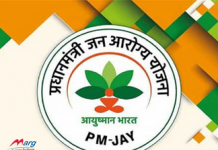Introduction
Kisan Vikas Patra (KVP) is a government-backed saving scheme that is popular among farmers and small investors in India. It was first introduced in 1988, and later revised in 2014 to make it more attractive for investors. In this blog, we will discuss Kisan Vikas Patra in detail, including its features, benefits, and drawbacks.
What is Kisan Vikas Patra?
Kisan Vikas Patra is a fixed deposit scheme that is issued by the Government of India. The scheme is available at post offices and authorized banks across the country. The minimum investment amount is Rs. 1,000, and there is no upper limit on the investment amount. The investment in KVP is doubled in a predetermined period, which is currently 124 months or 10 years and 4 months.
Features of Kisan Vikas Patra
- Investment amount: The minimum investment amount is Rs. 1,000, and there is no upper limit on the investment amount.
- Tenure: The investment in KVP is doubled in a predetermined period, which is currently 124 months or 10 years and 4 months.
- Interest rate: The interest rate on KVP is not fixed and is subject to change. Currently, the interest rate is 6.9% per annum.
- Transferability: The KVP certificate can be transferred from one person to another, subject to certain conditions.
- Maturity amount: The maturity amount is the principal amount invested plus the interest earned during the tenure.
Benefits of Kisan Vikas Patra
- Guaranteed returns: KVP offers guaranteed returns, and the investment is doubled in a predetermined period.
- Low risk: KVP is a low-risk investment option, as it is backed by the Government of India.
- Tax benefits: The investment in KVP is eligible for a tax deduction under section 80C of the Income Tax Act, 1961.
- Flexible investment amount: There is no upper limit on the investment amount, and investors can invest as per their convenience.
- Easy liquidity: KVP certificates can be encashed at any post office or authorized bank before maturity.
Drawbacks of Kisan Vikas Patra
- Long-term investment: KVP has a long-term investment horizon of 10 years and 4 months, which may not be suitable for investors with short-term financial goals.
- Interest rate risk: The interest rate on KVP is subject to change, and investors may not benefit from the higher interest rates if the rates fall during the investment period.
- Inflation risk: The returns on KVP may not beat inflation, and the real value of the investment may erode over time.
- No premature withdrawal: KVP does not allow premature withdrawal, and investors may have to wait for the entire tenure to receive the returns.
- Limited liquidity: KVP certificates can only be encashed at post offices or authorized banks, and investors may face liquidity issues in case of an emergency.
Kisan Vikas Patra (KVP) is an excellent investment option for investors who are looking for a low-risk, long-term investment option. The scheme is popular among farmers, small investors, and people from rural areas due to its simple features and guaranteed returns. The scheme is backed by the Government of India, which makes it a safe investment option.
One of the significant benefits of investing in KVP is that it is eligible for tax deductions under section 80C of the Income Tax Act, 1961. The deduction is available up to Rs. 1.5 lakhs, which means investors can save on their taxes by investing in KVP. Moreover, the interest earned on the investment is also taxable, which is added to the investor’s income and taxed as per the income tax slab.
The investment in KVP is also transferable from one person to another, subject to certain conditions. The transfer can be made from one post office or authorized bank to another, and the transferor and transferee have to fill the necessary forms and pay the transfer fee. This feature makes KVP a flexible investment option, as investors can transfer their investment in case of a change in their financial situation or other circumstances.
The interest rate on KVP is not fixed and is subject to change from time to time. The current interest rate on KVP is 6.9% per annum. However, investors should note that the interest rate is compounded annually, which means that the returns are calculated on the principal amount plus the interest earned during the previous years. This feature helps investors earn higher returns over the long term.
One of the drawbacks of investing in KVP is the lack of liquidity. The certificates can only be encashed at post offices or authorized banks, which may not be available in all areas. Moreover, premature withdrawal is not allowed, which means investors have to wait for the entire tenure to receive the returns. This feature may not be suitable for investors who require liquidity in case of an emergency.
KVP has a minimum investment amount of Rs. 1,000, and there is no maximum limit on the investment. This feature makes it accessible to small investors who may not have a significant amount to invest. Moreover, investors can invest in KVP jointly with another person, which means that they can pool their resources and earn higher returns.
The tenure of KVP is fixed at 124 months or ten years and four months. This feature makes it a long-term investment option and is suitable for investors who are looking to invest their money for a long period. The interest earned on KVP is paid at the time of maturity, which means that investors receive a lump sum amount at the end of the tenure.
Conclusion
Kisan Vikas Patra is a popular investment option for small investors and farmers in India. It offers guaranteed returns, low risk, tax benefits, and flexible investment amount. However, it also has drawbacks such as long-term investment, interest rate risk, inflation risk, no premature withdrawal, and limited liquidity. Investors should weigh the pros and cons before investing in KVP and choose an investment option that aligns with their financial goals and risk appetite.
Read more useful content:
Frequently Asked Questions (FAQs)
Q1.) What is Kisan Vikas Patra (KVP)?
Kisan Vikas Patra (KVP) is a savings scheme launched by the Government of India to encourage savings and investment among small investors, especially farmers.
Q2.) Who can invest in KVP?
Any resident individual, including minors, can invest in KVP. The scheme is particularly popular among farmers and people from rural areas.
Q3.) What is the minimum investment amount in KVP?
The minimum investment amount in KVP is Rs. 1,000, and there is no maximum limit on investment.
Q4.) What is the tenure of KVP?
The tenure of KVP is 124 months or ten years and four months.
Q5.) What is the interest rate on KVP?
The interest rate on KVP is not fixed and is subject to change from time to time. The current interest rate on KVP is 6.9% per annum.
Q6.) Is the interest earned on KVP taxable?
Yes, the interest earned on KVP is taxable and is added to the investor’s income and taxed as per the income tax slab.
Q7.) Can I withdraw my investment in KVP before the maturity date?
No, premature withdrawal is not allowed in KVP. The investment can only be encashed at the time of maturity.
Q8.) Can I transfer my investment in KVP to another person?
Yes, investors can transfer their investment in KVP to another person subject to certain conditions. The transfer can be made from one post office or authorized bank to another, and the transferor and transferee have to fill the necessary forms and pay the transfer fee.
Q9.) Can I use KVP as collateral for loans?
Yes, investors can use KVP as collateral to avail of loans from banks and financial institutions.
Q10.) Is KVP a safe investment option?
Yes, KVP is a safe investment option as it is backed by the Government of India. However, investors should also consider the drawbacks, such as long-term investment, interest rate risk, inflation risk, lack of liquidity, and no premature withdrawal, before investing in KVP.




















